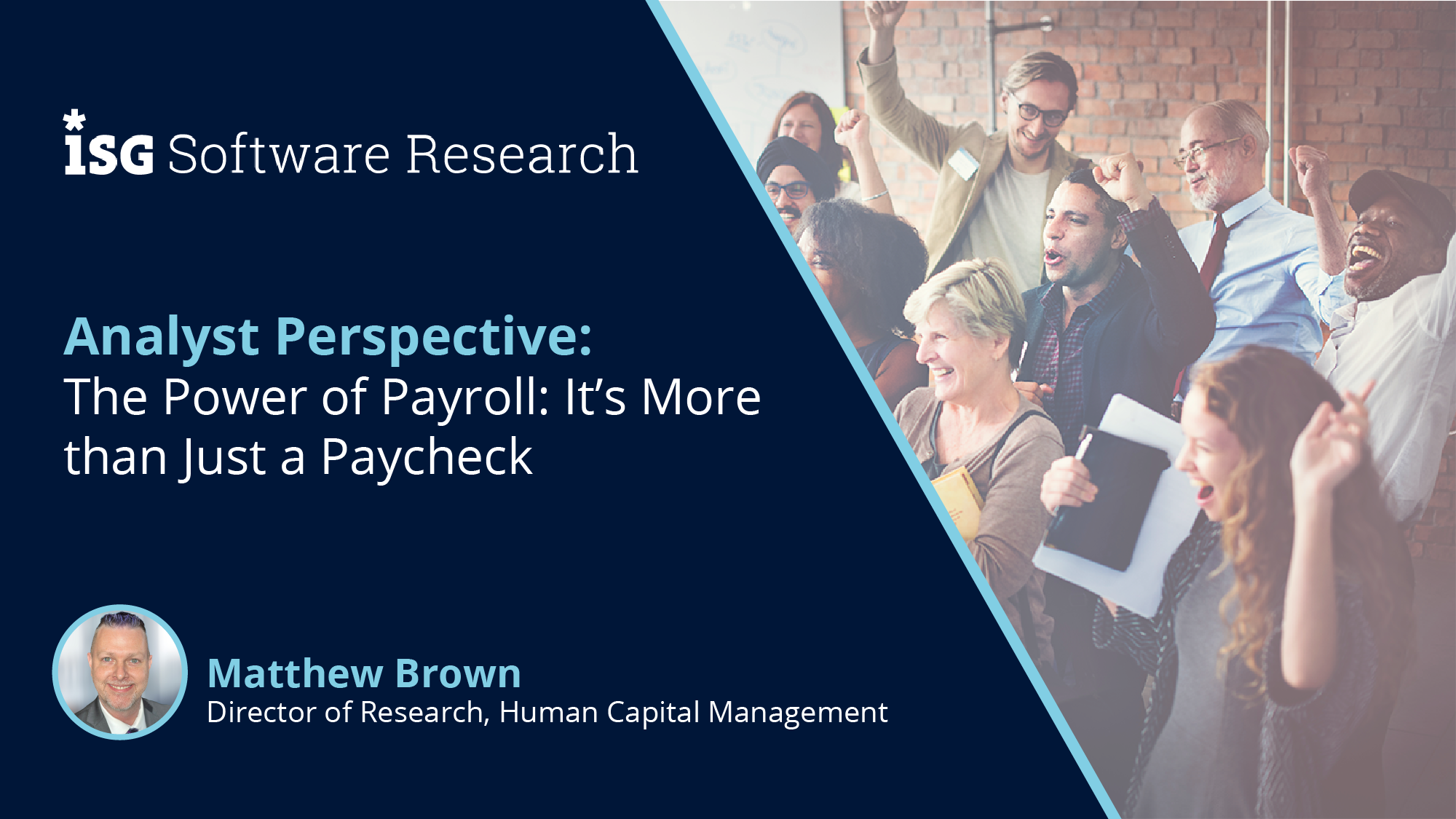Payroll is one of the most universal touchpoints within any organization, impacting every employee on a regular basis. It’s the one thing every employee notices if it does not work perfectly. Yet, despite its far-reaching presence, payroll often operates quietly in the background, treated as an administrative function focused solely on ensuring people are paid accurately and on time. This perception, while understandable, drastically undervalues what payroll can offer.
Imagine a payroll system that does more than simply process paychecks. What if payroll could do more than just pay people? What if it became a strategic powerhouse—boosting employee engagement, shaping smarter workforce planning and even improving financial wellness? Today’s advancements in payroll technology have unlocked new opportunities for organizations willing to rethink its role.
For many employees, their most consistent interaction with their employer comes through payroll systems. Payroll systems are an often-overlooked communication channel. Employees already interact with payroll regularly—making it the perfect platform to share personalized messages about benefits enrollment, training opportunities or work anniversaries.
These systems handle routine tasks like viewing paychecks, checking deductions or accessing earnings history. These regular interactions represent untapped potential. Imagine if routine payroll interactions became opportunities to celebrate milestones, promote wellness programs or share career opportunities. These small but meaningful touchpoints could transform ordinary transactions into moments that build trust and connection.
Beyond engagement, payroll systems hold great potential as tools for strategic decision-making. They generate data that offers deep insights into labor costs, overtime trends and workforce distribution. For too long, this rich data has been sitting in the shadows, underutilized. By unlocking its potential, businesses can move from reactive management to proactive, data-driven strategy. By analyzing these patterns, businesses can make more informed decisions about staffing, retention strategies and shift scheduling.
Integrating payroll with other HR systems unlocks powerful possibilities. For example, linking payroll data with performance metrics could reveal correlations between compensation and productivity, or help identify retention risks. Similarly, integrating payroll with workforce planning tools provides a comprehensive view of labor dynamics, enabling smarter hiring and team realignments. These integrations create a more cohesive picture of the workforce, aligning payroll insights with broader business goals.
Financial stress is a growing concern for employees, impacting productivity and well-being. Payroll systems can ease this burden through features like earned wage access, which gives employees flexibility to draw part of their pay before payday. These tools foster financial stability and contribute to a more satisfied, productive workforce. Because of this, I assert that by 2026, one-third of enterprises will offer earned wage access (EWA) to their workforce as on-demand payroll offerings become available for workers who desire and demand pay flexibility.
like earned wage access, which gives employees flexibility to draw part of their pay before payday. These tools foster financial stability and contribute to a more satisfied, productive workforce. Because of this, I assert that by 2026, one-third of enterprises will offer earned wage access (EWA) to their workforce as on-demand payroll offerings become available for workers who desire and demand pay flexibility.
Modern payroll platforms can also incorporate tools and resources for financial education, such as budgeting advice or retirement planning. These initiatives don’t just benefit employees—they support a more stable, engaged workforce that’s better equipped to focus on organizational goals.
Of course, seizing these opportunities isn’t always easy. Significant barriers still prevent many organizations from fully realizing payroll’s potential. Legacy systems, designed primarily for wage processing often suffer from a lack of flexibility, scalability and integration capabilities, preventing organizations from leveraging payroll as a strategic tool. Additionally, siloed payroll systems that don’t integrate with broader HR or financial tools limit the flow of data, stifling innovation. Upgrading to modern payroll technology can overcome these limitations, opening the door to real-time data, automation and advanced analytics.
Another challenge is cultural resistance. Many organizations continue to see payroll as a transactional, back-office function. Changing this perception requires a shift in how payroll’s role is viewed—not as a necessary task, but as a platform that can contribute to broader business goals.
Fortunately, advancements in payroll technology are addressing these challenges. Real-time payroll capabilities, for instance, allow employees to view and access their earnings as they are earned, reducing financial stress and providing greater flexibility. For employers, these systems offer immediate insights into labor costs, improving budget management and enabling better forecasting.
Artificial intelligence (AI) and analytics are transforming payroll into a dynamic, data-driven function. For instance, AI can automate compliance checks, flagging errors in tax calculations or benefits deductions before they escalate.  It can also uncover patterns in payroll data, such as overtime trends linked to employee turnover, enabling HR to proactively adjust workloads or retention strategies. Similarly, analytics tools provide real-time insights into labor costs, helping organizations optimize shift schedules and improve budget management. Together, these technologies free HR teams to focus on strategic initiatives, turning payroll into a proactive driver of business success. Because of this, I assert that by 2028, one-fifth of enterprises will benefit from payroll platforms that use AI to detect errors and omissions that would prohibit the payroll run, like missed punches, and nudge managers to take action and resolve.
It can also uncover patterns in payroll data, such as overtime trends linked to employee turnover, enabling HR to proactively adjust workloads or retention strategies. Similarly, analytics tools provide real-time insights into labor costs, helping organizations optimize shift schedules and improve budget management. Together, these technologies free HR teams to focus on strategic initiatives, turning payroll into a proactive driver of business success. Because of this, I assert that by 2028, one-fifth of enterprises will benefit from payroll platforms that use AI to detect errors and omissions that would prohibit the payroll run, like missed punches, and nudge managers to take action and resolve.
Payroll touches every employee and every paycheck—it’s the most consistent connection between people and their organization. By reimagining payroll as a strategic asset, businesses can unlock its potential to drive engagement, inform planning and support employee well-being. Are your current systems fully integrated with other HR tools? Do they offer advanced features like real-time payroll or earned wage access?
By rethinking payroll’s role, and leveraging technology with intention and purpose, you can transform it from a routine process into a strategic asset that drives engagement, informs planning, and improves employee well-being. For a deeper dive into the trends and solutions shaping modern payroll systems, explore ISG’s latest Payroll Management Research. It’s time to stop seeing payroll as just another task—and start imagining what it could do for your people, your workforce, and your business.
Regards,
Matthew Brown
Fill out the form to continue reading.

